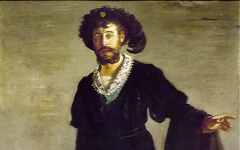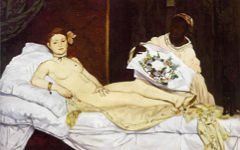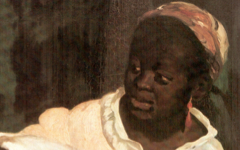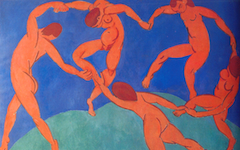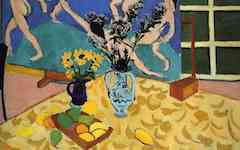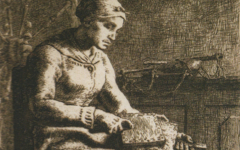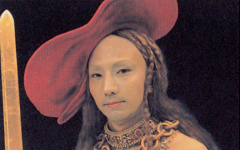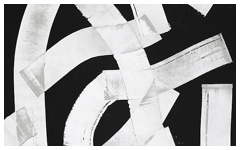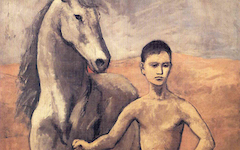Brush and Palette
One of the longest-running, little-known traditions in Western art is the use of visual metaphors for the tools of the artist’s trade, most commonly brush and palette. Daggers and swords, which are long and thin like a paintbrush, are often used to symbolize brushes while the accompanying battle or fight depicts, unseen by the unsuspecting viewer, the artist’s own creative struggle. Palettes are suggested in circular objects such as shields, plates, or flat surfaces such as tables. A bunch of flowers, often circular, can also suggest the many different colors on a palette. And, although Michael Fried has noted similar symbolism in Courbet’s paintings and recently in Caravaggio's too, visual metaphors for the tools of an artist's craft have been used in paintings since at least the early Renaissance.{ref1} Here, for the first time, we show how common they are in art of the past six centuries and how crucial to the meaning of the work too.
1. Michael Fried, Courbet’s Realism (University of Chicago Press) 1990; Fried, The Moment of Caravaggio, A.W. Mellon Lectures in the Fine Arts (Princeton University Press) 2010
All Articles (Alphabetical by Artist, then Title)
Learn something about Manet's first major painting that has never been noted, except by artists.
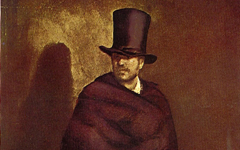
Manet’s Absinthe Drinker (1858-9)
See how both Manet and Chardin veil their meaning in the same way
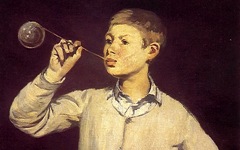
Manet’s and Chardin’s Soap Bubbles (18th/19th Cent.)
See how Manet identifies with a female artist of his own acquaintance, probably without her even knowing

Manet’s Before the Mirror (1876)
Everyone knows that Boating is a masterpiece. Why is it so difficult to explain?

Manet’s Boating (1874)
This curious painting by Manet makes little sense until the viewer uses the idea that every painter paints himself

Manet’s Boy with a Sword (1861)
Artists do not have to use their own features in a portrait of someone else. There are other ways of identifying with the sitter as Manet demonstrates in this portrait.

Manet’s Boy with Cherries (1860)
Art scholars have sometimes wondered why the execution squad in Manet's Execution of Emperor Maximillian are so unrealistically close to their target. Indeed, on close inspection, their rifles are aimed as though they would miss.
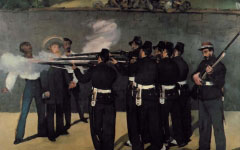
Manet’s Execution of Emperor Maximillian (1867-8)
Find out how the viewer in this garden scene is really inside Manet's mind
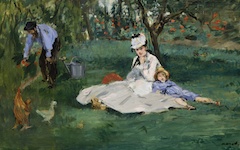
Manet’s Monet Family in the Garden (1874)
Don't forget to imagine what can't be seen: the artist's viewpoint
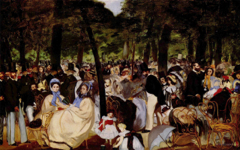
Manet’s Music in the Tuileries (1862)
This etching of an Odalisque by Manet could easily be interpreted as just a variation on a popular theme, an oriental woman reclining. Look carefully, though, and she becomes a painter.

Manet’s Odalisque
Skating on ice is like drawing lines on the mirrored surface of the artist's mind

Manet’s Skating (1877)
How an unfinished painting is finished and how a horse becomes an easel

Manet’s The Horsewoman (1875)
A good example of how the "errors" in a painting are really the key to its meaning
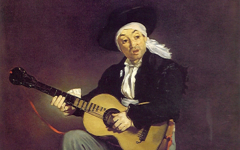
Manet’s The Spanish Singer (1860)
This magical composition hides a complex thought of seeming effortless construction: a masterpiece of the first order

Manet’s Tragic Actor (1865-6) Part 1
There is more to the Tragic Actor than meets the eye. Find out what's there that others cannot see.
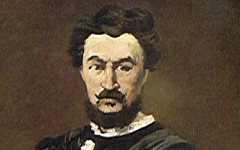
Manet’s Tragic Actor (1865-6) Part 2
An early example of how Manet turns a modern woman, and his future wife, into an artist

Manet’s Woman with a Jug (1858-60)
In this 1490 version of Saint Sebastian in the Ca' d'Oro, Venice, Saint Sebastian has one leg in the "picture", so to speak, framed by the marble, with the other stepping forward out of it into our space.
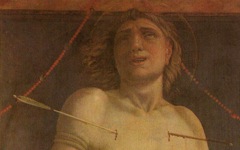
Mantegna’s Saint Sebastian (1490)
See how Matisse himself appears in even a simple drawing of an unidentified model
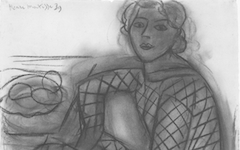
Matisse’s Seated Young Woman in a Patterned Dress (1939)
An early example of how art is a guide to what we now call "self-knowledge".
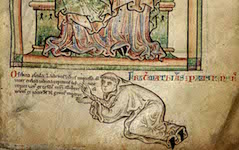
Matthew Paris’ Virgin and Child with Artist Kneeling (c.1250)
Arrows in art are often "brushes", especially with inconsistencies on the literal level

Memling’s Martyrdom of St. Sebastian (c.1475)
Find out what the studio and Golgotha have in common
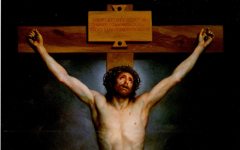
Mengs’ Christ on the Cross (1761-9), Goya’s and Francis Bacon’s too
A mysterious drawing that has never made sense is now explained simply

Michelangelo’s Archers Shooting at a Herm (c.1530) Part 1
Michelangelo’s Last Judgment is a composition so full of incidents inconsistent with an orthdox reading of the Last Judgment and theology that experts often have trouble explaining them.
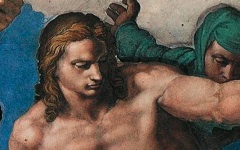
Michelangelo’s St. Sebastian in The Last Judgment
Discover how you can unlock layers of meaning from a relatively simple composition
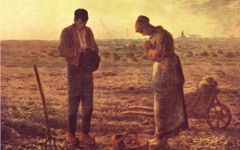
Millet’s The Angelus (1857-9) and other works
One way to make sense of Miró's abstractions is to remember, as ever, that 'every painter paints himself.'
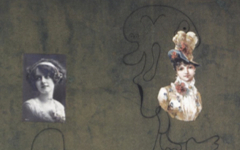
Miró‘s Drawing-Collage (1933)
Is landscape portraiture? Monet clearly thinks so.
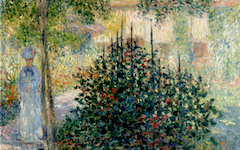
Monet’s Camille Monet in the Garden at Argenteuil (1876)
Keeping alert to differences in style within a painting can help unlock its meaning
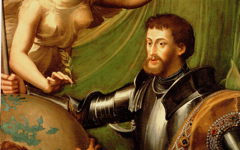
Parmigianino’s Allegorical Portrait of Emperor Charles V (1529-30)
Peale's American portraits have more in common with great European art than is generally accepted.

Peale’s Portrait of George Washington (c.1780)
Picasso kills a bull with his own paintbrush while indicating his divinity.
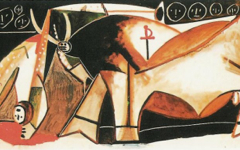
Picasso’s Bullfight Scene (1955)
"Picasso" paints from the other side of the image using a cigarette for a brush
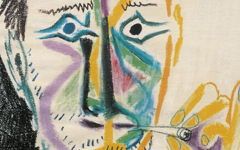
Picasso’s Bust of a Man with a Cigarette (1964)
Two protagonists in one painting must both represent the artist. It's a given in art so it's your job to find out how.

Picasso’s Cat Catching a Bird (1939)
Here is a very obvious example of one artist's identification with another
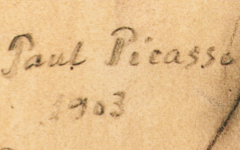
Picasso’s Female Nude in Profile (1902)
See how Picasso understood Manet's meaning, a meaning that still escapes art historians who think and see superficially

Picasso’s Girl Before a Mirror (1932)
When you discover what is underneath Picasso's early Blue Period paintings, the meaning changes...drastically.
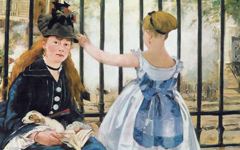
Picasso’s Harlequin (1901) and Blue Period
How we know that the young Picasso knew his destiny
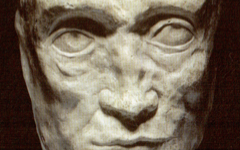
Picasso’s Head of Picador with Broken Nose (1903)
Learn how the young Picasso played around with several themes in a relatively simple composition
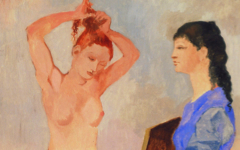
Picasso’s La Toilette (1906)
Not a particularly successful picture but an excellent learning tool

Picasso’s Portrait of Jacqueline (1965)
Genres are an artificial classification of little meaning. For instance, as here, still-life without life would be still-born.
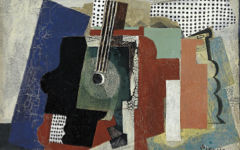
Picasso’s Still-Life with Door, Guitar and Bottles (1916)
© Simon Abrahams. Articles on this site are the copyright of Simon Abrahams. To use copyrighted material in print or other media for purposes beyond 'fair use', you must obtain permission from the copyright owner. Websites may link to this page without permission (please do) but may not reproduce the material on their own site without crediting Simon Abrahams and EPPH.

